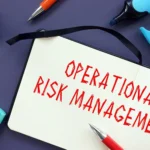Navigating the labyrinth of credit risk is a formidable task for modern banks. With the financial landscape fraught with uncertainties—from stringent regulatory demands to volatile market dynamics—institutions face myriad challenges in managing credit effectively. This article sheds light on these pressing issues and offers pragmatic solutions to help banks fortify their credit risk frameworks, ensuring resilience and compliance in an ever-evolving environment.
Credit risk is one of the significant risks for banks and financial institutions across the globe, and it can lead to significant financial and reputational losses. Credit risks emerge due to the possibility of defaults on debt obligations, wherein a borrower fails to pay back the dues to the lender.
Banks must proactively manage their credit risks considering the high uncertainty in situations leading to a default.
The practice of credit risk management addresses various issues:
- Mitigates risks and minimizes losses
- Curtails fraudulent activities
- Safeguards against potential compliance violations
- Maximizes the risk-adjusted return by minimizing the risk exposure (preferably within acceptable parameters)
However, navigating the complex credit risk landscape poses significant challenges to lenders.
This blog explores the top challenges to credit risk management and discusses solutions to overcome them. By understanding and addressing these challenges, banks can boost their risk management capabilities, ensure regulatory compliance, and maximize returns.
Challenges to Credit Risk Management and Potential Solutions
1. Complex Regulatory Requirements
One of the foremost challenges in credit risk management is keeping up with regulatory shifts. Compliance burden with constantly changing regulations imposed by the industry authorities, government, and regulatory bodies pose a significant challenge to banks and financial institutions,
For instance, Dodd-Frank Act imposes complex regulatory demands on financial institutions, including
- Risk assessment
- Capital adequacy
- Reporting
- Consumer protection
- Stress testing
- Whistleblower program
- Derivatives regulation
Meeting these requirements demands robust risk models, transparency, and significant resources.
To avoid hefty penalties and reputational damage, banks must be abreast of the latest regulatory and compliance requirements. Failure to meet the regulatory requirements due to any reasons, such as lack of resources, inaccurate reporting, etc., can lead to consequences, including
- Hefty penalties
- Loss of customer/stakeholder trust
- Reduced business opportunities
To tackle this challenge, lending institutions can follow these tips:
- Prioritize compliance risk management
- Conduct internal audits and involve or leverage external auditors or compliance experts
- Foster a compliance-focused culture
- Implement compliance controls
- Seek guidance and clarity from regulatory authorities
2. Data Quality and Availability
Banks and financial institutions need to process large amounts of data for risk assessment, which is a daunting task, to say the least. They heavily rely on data processing to detect and assess potential risks and make informed decisions about their borrowers.
However, most banks struggle with data quality, data accuracy, data availability, data, and data security.
This hampers risk assessment and decision-making and may happen due to the following reasons:
- Lack of data governance
- Data silos
- Unreliable third-party data
- Legacy or age-old systems
- Issues with data integrity and relevance
To address this challenge, banks need to:
- Implement Robust Data Management Systems to ensure data accuracy, completeness, and availability.
- Advanced-Data Analysis Capabilities
Data analytics and business intelligence solutions can enable banks and lending institutions to assess, analyze, and utilize vast data more efficiently. - Data Governance
It is critical to maintain data accuracy, consistency, and relevance. It involves forming policies, processes, and controls to govern data throughout its lifecycle, from collection to disposal.
3. Shortage of Skilled Personnel
Credit risk management requires a diverse skillset, including expertise in
- Statistical modeling
- Data analysis
- Risk assessment
However, finding and retaining a skilled workforce for credit risk management is challenging for banks and financial institutions.
Banks and lending institutions can partner with managed service providers specializing in credit risk management.
Managed services can provide operations support and scale up the lender’s credit risk management capacity and capabilities in several ways:
- Global availability of trained and experienced workforce
- Right-shoring model to support credit risk management on the preferred shore
- Integrated quality and compliance and high manageability
- Scalability and agility to ramp up/ramp down the capacity based on the demand
This collaboration helps banks with access to skilled professionals and enhances their overall credit risk management capabilities.
4. Rapidly Changing Market Conditions
The financial services industry operates amid volatile market conditions, evolving regulatory landscape and customer preferences/behavior, and complex financial products and players. Banks and lenders must quickly adapt to these changing market conditions for effective credit risk management.
Failure to respond to market shifts promptly can expose the bank or the financial institution to increased risks and potential losses.
To address this challenge, banks require dynamic and flexible solutions that empower them to adapt quickly to changing market conditions. These include-
- Implementing advanced analytics and modeling capabilities to get valuable insights and make informed decisions in response to market fluctuations
- Investing in workforce upskilling and continuous training programs
5. Counterparty Risk
Counterparty risk is a significant concern in credit risk management that arises when a party fails to fulfill its contractual obligations, leading to significant financial losses or default risk (negative actions).
Therefore, it’s critical for banks and financial institutions to thoroughly assess and mitigate counterparty risks and stabilize their portfolios.
To overcome this challenge, financial institutions can refer to the following strategies:
- Leverage advanced data analytics and modeling capabilities
- Effective KYC and due diligence
- Diversify counterparties to distribute the risk across multiple parties
- Use collateral agreement, such as a letter of credit
6. Accurate Risk Assessment
One of the primary challenges in credit risk management is the accurate assessment of creditworthiness. To evaluate a borrower’s creditworthiness, banks must evaluate multiple parameters, including:
- Financial stability
- Credit history and scores from the credit bureau
- Accounts
- Borrowers’ past repayment history and behavior
- Likelihood of default
Inaccurate evaluation of borrowers’ creditworthiness can expose the bank or lender to a significant risk of default, resulting in potential financial losses.
However, obtaining reliable and updated financial information about a borrower can be a challenging task, especially for SMEs and individuals with limited, recent, or no credit histories.
To overcome this challenge, banks can leverage intelligent digital solutions powered by emerging technologies, such as AI/ML and data analytics. These technologies help analyze vast amounts of data from multiple sources more efficiently.
Banks can also take the following measures:
- Implement Know Your Customer (KYC) policies (CIP, CDD, & EDD) to identify their customers
- Deploy strong internal controls to reduce errors
- Develop risk mitigation policies and strategies
- Ensure regulatory compliance in credit risk assessment
- Borrower segmentation based on their risk profiles
More Solutions for Effective Credit Risk Management
1. Use Credit Risk Management Framework
A well-defined framework can help banks ensure consistency and standardization in their credit risk management practices. This further enables them to identify and address potential risks proactively. Therefore, banks and financial institutions must implement a robust credit risk management framework with clear policies, procedures, and guidelines for assessing and managing credit risks. It should also include,
- Risk appetite statements
- Credit risk assessment methodologies
- Credit risk monitoring and reporting mechanisms
They can also implement and use some leading risk management frameworks, such as COSO, NIST, COBIT, RIMS, CAS, ISO 31000, etc.
2. Use of Blockchain Technology in Credit Risk Management
Blockchain is a decentralized and distributed ledger system that enables secure, transparent, and tamper-proof data recording and storage. Blockchain implementation can help banks and financial institutions in the assessment and mitigation of credit risks with enhanced security, transparency, and efficiency in the following ways:
- Smart contracts enable with auto-execution of predefined terms and conditions when a specific event occurs
- Decentralized identity verification to reduce the risk of fraudulent applications
- Providing the most up-to-date (real-time updates) credit profiles of borrowers
- Reduce counterparty risk by eliminating the need for intermediaries
- Secure data sharing among different stakeholders, including regulatory bodies, credit bureaus, etc.
- The immutable nature of blockchain ensures data is securely stored and cannot be tampered with or altered.
Conclusion
Credit risk management in banks is a multifaceted challenge that requires a comprehensive approach. By addressing the key challenges discussed in this guide, banks can enhance their credit risk management capabilities and maximize their returns while meeting regulatory requirements.
Anaptyss as a strategic partner helps banks and financial institutions manage credit risks with its exclusive Digital Knowledge Operations™(DKO™)-based enterprise risk management (ERM) approach. It’s a customized solution with advanced data analytics and AI/ML capabilities that enables financial institutions to efficiently assess credit risks and make data-driven decisions for effective credit risk management.
Interested in learning more about the credit risk management? Write to us: info@anaptyss.com


















